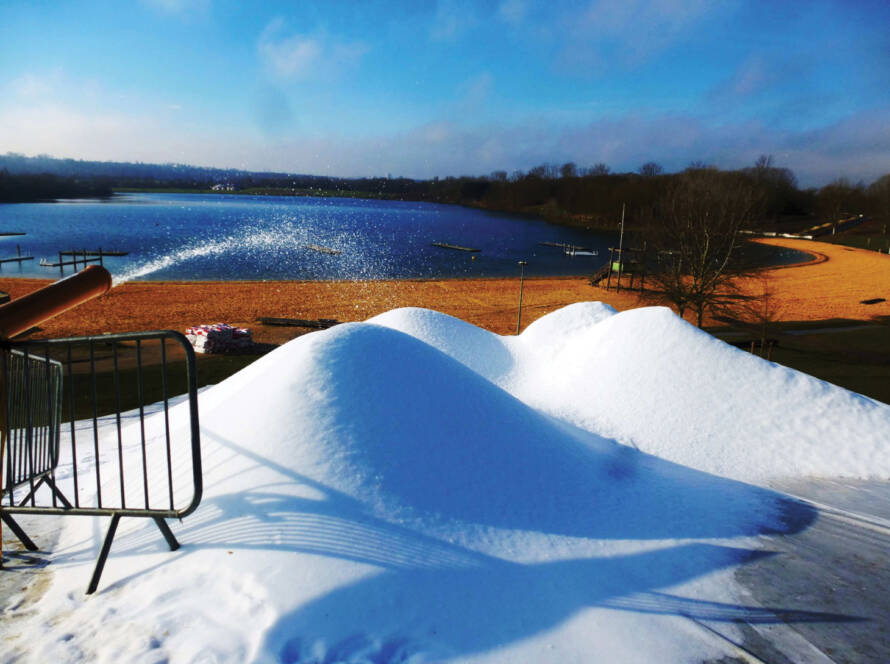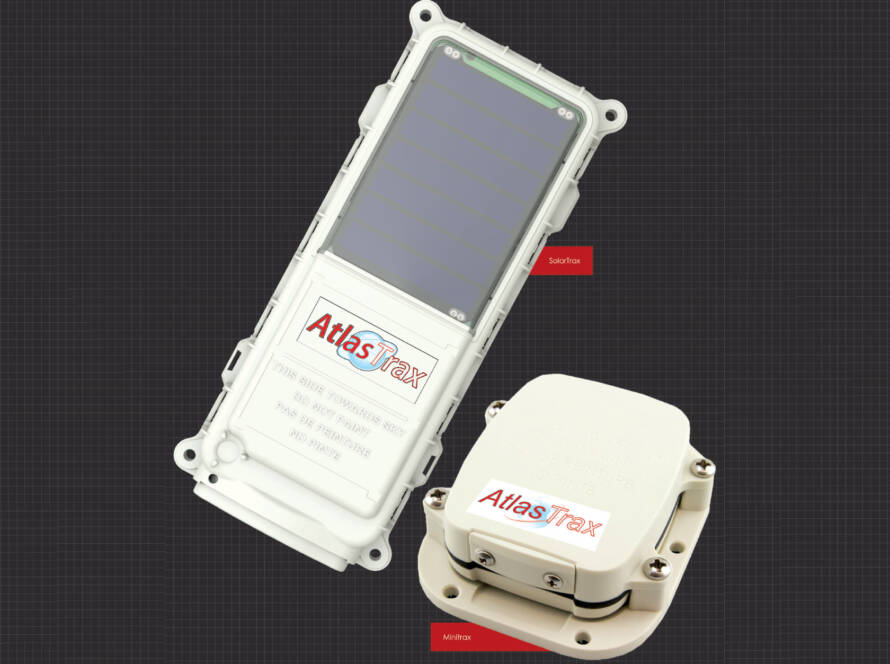Now in its third generation, the adjustable four-post lift handles everything from snowcats to snowmobiles, and is widely credited with boosting productivity and improving shop safety. When the owner of Labrador Mountain ski resort in central New York called Gary Pavlick in 1994, he wasn’t sure Pavlick’s company, Lif-Tech Equipment, could help him. The ski hill’s maintenance shop was searching for a vehicle lift big enough to raise a snowcat.
At the time, such a machine didn’t exist. However, Pavlick immediately understood what Labrador Mountain needed. Lif-Tech already distributed heavy-duty vehicle lifts for buses and trucks, catering mainly to transit authorities and highway departments. As a lifelong skier, Pavlick was also familiar with ski resort equipment. Although he had long recognized the need for a specialized maintenance lift for these vehicles, there was a gap between what small ski areas could afford and what a lift of this nature would cost.
“When Labrador Mountain called, we took on the challenge and decided to adapt a traditional four-post vehicle lift for the product, which we named LIF-TRACK,” Pavlick said during a recent interview with SnowOps.
It’s not an understatement to say LIF-Track revolutionized vehicle maintenance at ski resorts. Now in its third generation, the lift is widely recognized for increasing productivity and shop safety. While standard vehicle lifts are about 12 feet wide, a snowcat lift requires a width of 20 feet. LIF-Track boasts a moveable platform that adjusts to raise a wide variety of vehicles, including snowcats, dump trucks, backhoes, pick-up trucks, ATVs and even snowmobiles.
As an all-vehicle lift, LIF-Track’s versatility makes it a useful tool at busy ski hill maintenance shops.
At Colorado’s Vail Mountain, shop supervisor Justin Tate oversees the maintenance of 44 snowcats and other miscellaneous equipment. Last September, Tate’s shop installed a new LIF-Track system with a 40,000-pound capacity. It replaced a 25-year-old earlier generation LIF-Track that maxed out at 25,000 pounds.
“I was the bad guy because I disabled our old lift; it didn’t have the capacity for modern snowcats,” said Tate. “For a year and a half, we had to use creepers to get under the equipment, which we drove up on blocks of wood.”
Without the LIF-Track, maintenance took much longer, and workers were tasked with the dirty and uncomfortable job of lying on their backs, under wet and muddy machinery. Tate says the new lift cuts the time to complete preventative snowcat maintenance in half. It is so effective that Vail Mountain is planning to buy another 40,000-pound capacity lift for its upper mountain maintenance shop.
“If we have two [technicians] on a snowcat job, you can have one up top and one underneath. Lifting it up in the air makes it so much easier – you have easier access to tools, drain pans and parts. The new lift is a foot wider than the older spec, so we can put up some of our snowcats that are bigger than standard,” said Tate.
Since that first request from Labrador Mountain, Lif-Tech has sold more than 130 LIF-Track units to ski hills across the United States and Canada. Like the one at Vail Mountain, many of the older lifts are nearing the end of their lifespan. Pavlick says much of his current business is generated from replacement sales.
The latest LIF-Track, released in 2019, is available with a 30,000-pound capacity for around $52,000 or a 40,000-pound capacity priced around $60,000, not including freight and installation. Pavlick says the second-generation LIF-Track is still available if the new model is beyond a resort’s budget.
The latest model features a number of improvements, including direct-drive hydraulic auto leveling, increased reliability through the elimination of wear items, electronically synchronized or independent operation for all four lift columns, and a programmable logic controller and human-machine interface (HMI) data screen.
“The HMI data screen shows the exact elevation of each column,” said Pavlick. “A lot of ski area garages have sloped floors to drain off the water from melting snow. The lift can be adjusted to keep the vehicle level, despite an uneven floor.”
The new system offers improved situational awareness and therefore increased safety. He said, “A snowcat is a dense and wide unit. You need to see exactly what’s going on with the four columns, to make sure everything is coming up and down, and there are no obstructions. Now, you not only have eyes on it, but you also have the data screen.”
Thomas Kendrick is the vehicle maintenance manager at Utah’s Snowbird ski resort. A LIF-Track unit was installed in his shop in 2017, and he agreed that productivity has increased for his six mechanics.
“We had two maintenance pits, so we put the lift in where one pit used to be,” he said. “It’s so much easier to walk around and under a machine versus being in a dark pit. Our pits are too small for a snowcat. The machine covers the exit stairs and you basically have to crawl out. I feel this is a confined space and the LIF-Track has definitely increased safety and improved ergonomics. My goal is to have two of them.”
Snowbird’s 30,000-pound capacity lift is used to service the resort’s 15 snowcats, 80 general vehicles, 35 snowmobiles and 15 ATVs.
“Before, we were lifting buses with jack stands under the axles,” said Kendrick. “Now, we have this awesome lift, and you can cruise right under it and see everything. It’s amazing the things you find when you’re not uncomfortable – if you’re on your back on a creeper or down in a pit, you want to get in and get out. But if the vehicle is up in the air, you can spend time and look at things more carefully. You can do more preventative maintenance; we’ve seen snowcat track issues we wouldn’t have otherwise seen, for example.”
Easy to install, simple to operate
Installing a LIF-Track lift takes 1.5 days at most, although they are usually up and running in just a few hours.
Before he arrives to set up new equipment, Pavlick has done his homework. This includes discussing the shop’s floor plan with resort representatives who also send him photos and measurements.
“We go into it with a really good game plan and make sure they have the electrical ready. We’re prepared for sloping floors. We make sure we have enough width and height – the ideal height is a clearance of 18 feet and an ideal bay is 22-feet-wide. Our biggest obstacle is a lack of physical height.”
Sometimes, Lif-Tech needs to adjust the lift’s configuration so it will work in a client’s shop. That was the case at Vail Mountain, says Tate, where Pavlick moved the electronic control panel to the other side of the lift to accommodate a tight layout.
As for user training, it’s reportedly a straightforward process. “Now that we have electronic controls, they are very intuitive. Training takes 20 minutes to half an hour,” said Pavlick.
He would like to increase sales outside of North America, but noted LIF-Track is a specialized product for a niche market.
“However, industry is changing, and shops need a higher lifting capacity for the newer, heavier snowcats. So, the market now is in replacements. Twelve of our last 14 jobs have been replacements, while two units went to customers who have never had a lift before.”
While the third-generation design may see some tweaks in coming years, Pavlick says there won’t be any drastic changes. Although LIF-Track is not the primary product in his sales repertoire, he clearly feels passionate about the impact it has made on ski resort vehicle maintenance.
“I love the industry; I really feel like we are helping people by improving their working conditions,” he said.
As for his customers, many are repeat buyers who agree with Kendrick that the cost of a LIF-Track unit is outweighed by the benefits.
“It’s an expensive tool, but a good tool is always expensive,” said Tate. “That’s why we’re buying a second one for this coming year. Everyone talks about ROI (return on investment) these days. If this cuts the time in half to get a job done, that adds up really fast.”



